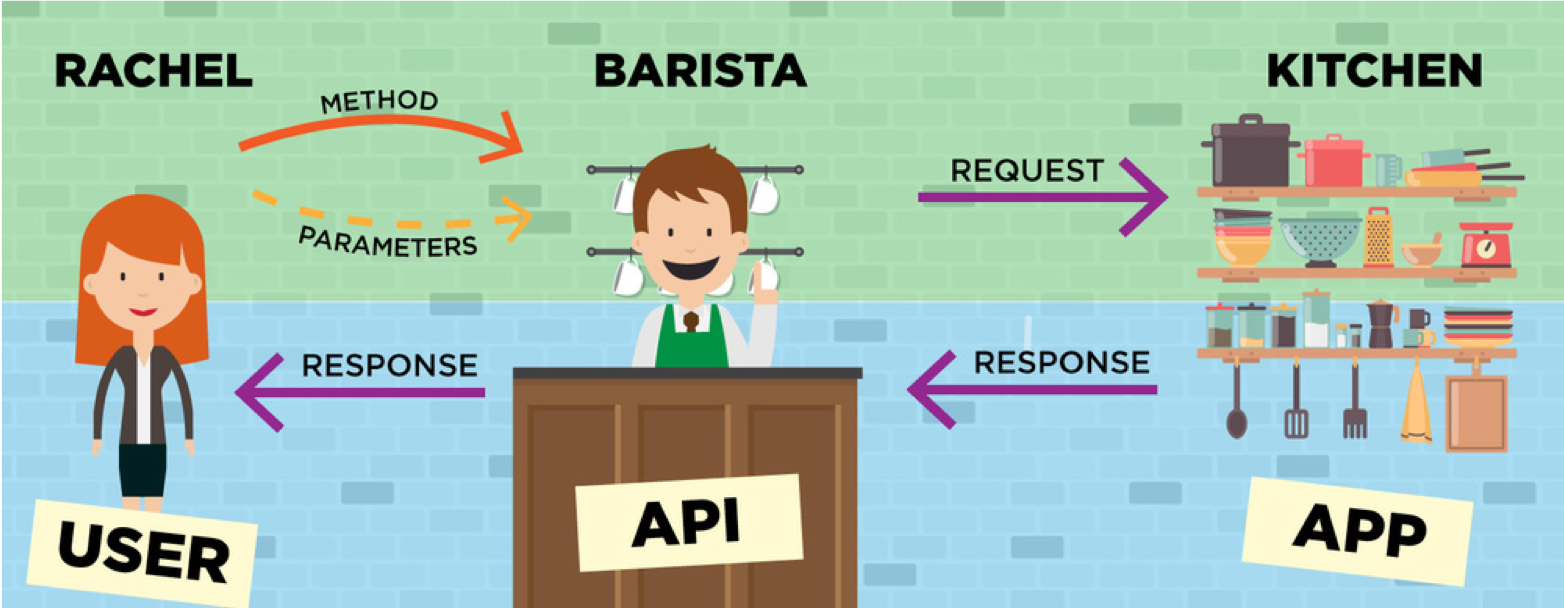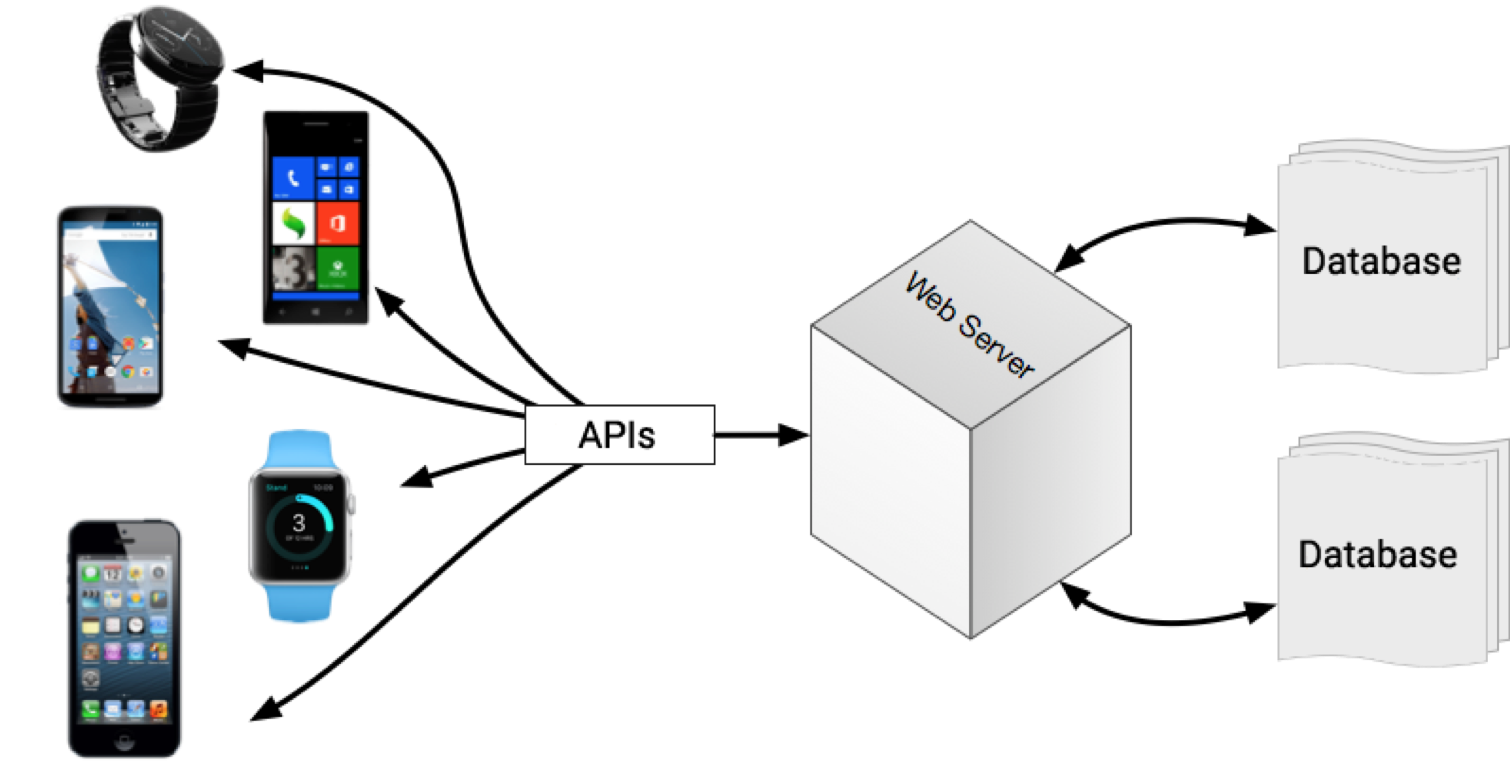Introduction to APIs
Overview
Teaching: 25 min
Exercises: 0 minQuestions
What are APIs? What can they do?
Objectives
Explain how an API functions
Explain common API types
Vocabulary
- API – Application Programming Interface
- A set of clearly defined methods of communication between various software components. (https://en.wikipedia.org/wiki/Application_programming_interface)
- REST – REepresentational State Transfer
- A data-driven architecture for web services reliant on HTTP
- GET – Requests data to be returned from an online source
- POST – Requests data to be submitted to an online source
- A data-driven architecture for web services reliant on HTTP
- SOAP–Simple - Object Access Protocol
- A protocol relying on XML structure to for requests & responses
- Send request XML using terms specific to SOAP•Response sent in XML format
- Can use any transport protocol, not just http
- A protocol relying on XML structure to for requests & responses
- OAuth – Open Authorization Standard
What is an API?
- Web Applications
- Kayak or Expedia

Library-related APIs
- HathiTrust
- Bibliographic API: https://www.hathitrust.org/bib_api
- Data API: ttps://www.hathitrust.org/data_api
- Springer or BioMedCentral
- 4 APIs: Sttps://dev.springer.com/
- OCLC
- 22 APIs: https://www.oclc.org/developer/develop/web-services.en.html
- Includes ‘Search’, ‘Metadata’, and ‘VIAF’ APIs
- Voyager API
- 2 APIs (VoyagerSearch, VoyagerUpdate)
- Developed by YUL Library IT (Yue Ji)
- Actively used by Preservation Department for their project and workflow
How APIs work

How APIs work

Key Points
APIs are used all over the web’
APIs alllow applications to request data from web servers
There are several types of APIs
APIs can act as a ‘middle-man’ between you and data
APIs can help gather bulk data & metadata from library services